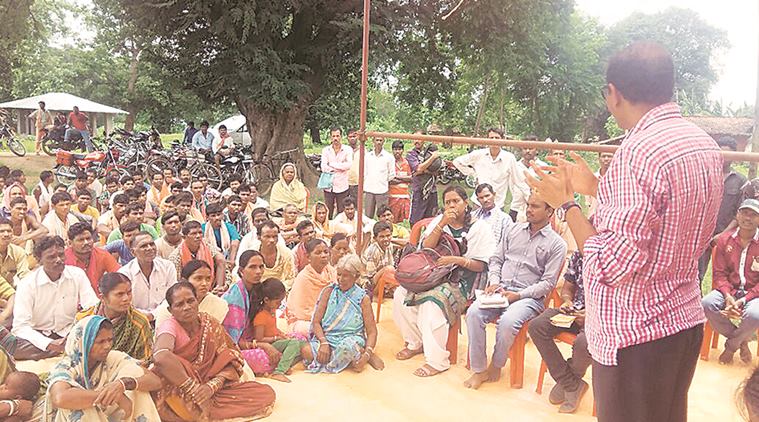- India
- International
Scientists in Bhubaneswar step in with push for crops rich in micronutrients
CTCRI director Dr Archana Mukherjee, who heads the six-member team, said the intervention by ICAR institutes was prompted by The Indian Express’s “District Zero” series on poverty and change in the district.
 An agriculture scientist addresses a meeting in Umerkote.
An agriculture scientist addresses a meeting in Umerkote.
Two Bhubaneswar-based institutes of ICAR (Indian Council of Agricultural Research) plan to adopt at least two villages in Nabarangpur, an effort to promote the growth of micronutrient-rich crops and help tribals arm themselves against malnutrition.
Last week, scientists of Bhubaneswar’s Central Tuber Crop Research Institute and Central Institute for Women in Agriculture visited Sukhigaon and Biriguda villages in Umerkote and Pondripokhana village in Raighar to assess local requirements.
CTCRI director Dr Archana Mukherjee, who heads the six-member team, said the intervention by ICAR institutes was prompted by The Indian Express’s “District Zero” series on poverty and change in the district. “The ‘District Zero’ series was haunting us. When our director general Trilochan Mohapatra asked us to do something for the hunger hotspots, we thought what could be a better place than Nabarangpur to focus on. Our project was conceived last month. Our aim is to bring freedom from hunger and malnutrition,” said Mukherjee.
CTCRI focuses on research on sweet potato and aroids catering to the needs of the eastern and northeastern regions. CIWA focuses on agricultural technologies and policies with a women’s perspective and undertakes studies to understand drudgery and safety-related issues of women farmers.
Dr Rajasekhara Rao Korada, principal scientist at CTCRI and coordinator of the project, said they would focus on making nutrition available between January and June before the arrival of monsoon. “Between January and June there is little food in a tribal household. At CTCRI we have varieties of sweet potato that could address the beta carotene deficiency and vitamin deficiency in tribal women and children. The sweet potatoes developed by us need very little water and would be suitable for Nabarangpur,” he said.

The two institutes will also help grow nutrient-rich colacasia and tapioca. “These will reduce dependence on potato available in he market. Every day, they can harvest one or two such tubers till June,” said Korada.
CTCRI, which has also conducted research on pulses, plans to introducing green gram and horse gram that would mature in 90 days. “Our objective is to intervene in their dietary practice and improve upon it to enhance its nutritional value. The tribals of Nabarangpur mostly eat dalma, a recipe of boiled pulses and vegetables. We will give them good saplings of papaya, banana and drumstick, which they can use in preparing dalma,” said Dr Mukherjee.
As per the BPL census of Odisha, over 73.6 per cent people in Nabarangpur live below the poverty line. According to the women and child development department, 3,400 children in the district suffer from malnutrition, 296 of them severely.
Apr 24: Latest News
- 01
- 02
- 03
- 04
- 05







































